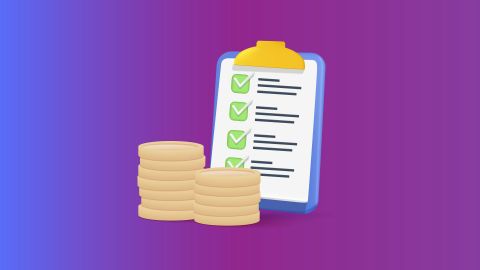Getting business finance for an SME in India has become both easy and convenient. But, before you make the most of this opportunity, study your business’ needs carefully. Paying close attention to your firm’s financial plans, potential opportunities, and revenue cycle will show you how to use and repay a business loan.
Here are the important steps to take before raising business finance for your company.
1. Analyse what kind of debt will suit your business
While thinking about finance, first choose between a business loan (debt) or equity. While equity will result in sharing the ownership of your company with the shareholders, taking on debt will ensure that the ownership of your company remains in your hands.
For example, if you are a fast-food restaurant, an investor may be ready to give you Rs. 15 lakh for a 30% stake in your business. However, you may find that this stake is too high based on your business assets and initial investment. Alternatively, you can consider debt, choosing between a secured or unsecured loan. Secured loans are the ones backed by collateral, which is usually an asset of some kind. In the case of non-repayment, the loan provider seizes the asset. Unsecured business loans do not need you to mortgage any asset but may charge you higher interest. Research all your options and choose the one which you think gives you the most advantages.
Additional Read: Pros and cons of business loan without collateral
2. Prioritise the purposes that need funds
A fast-food outlet may need funds for many things. For example, you will need several stovetops, fryers and hot cases to ensure that you can cook food fast and keep it hot.
You will also need to staff your kitchen with several cooks. Lastly, you’ll also have to focus on the interiors of your restaurant so that customers keep coming back. The needs are many, but it is your job to work out your priorities. What is it that you can’t do without? Invest in areas that will increase your production and have a direct impact on your profits. Prioritising your needs will help you make the best use of business funding.
Additional Read: How to raise capital for your business
3. Determine the period over which you need financing
Analyse whether you need funds for your immediate needs or over a longer time. For example, in your fast-food outlet, you may need funds for a lengthier term to buy, maintain and upgrade heavy machinery such as fryers and commercial stoves. But, you may also need one-time funds to buy furniture and cutlery for your service area. Some businesses need funds depending on the season or time of the year. Does this hold true for your business? You can pick the best source of finance based on your busy period and the tenor offered by your chosen mode of finance.
Additional Read: When is the best time to get a business loan
4. Be realistic about your repayment capability
Financial planning involving a budget, projected sales, and an expense plan will help you gauge your repayment capability and help you choose the right loan amount. Start by putting all your numbers into a spreadsheet and then test them. Be honest when it comes to your financial position, both present and for the next couple of years. You should also estimate the returns if you access different forms of capital. This will project a good image when you apply for a business loan as lenders may ask to see your current and projected revenue before giving you funds.
5. Ensure you have a healthy debt to equity ratio
The debt-to-equity ratio describes the financial health of your business by comparing your total assets by your total liabilities. You want your dependency on debt to be lower than your income. Ensure that your score is less than 0.4, as this increases your scope of getting business finance.
6. Check which type of loan you qualify for
All loan providers have eligibility criteria that you must meet to get approval on your loan application. Usually, loan providers need your business to be at least three to five years old. Your company should also have a turnover of a specific amount, file income tax returns and have a good company credit report. Once you fulfil the basic criteria, you can pick a business loan from the ones you qualify for.
Additional Read: How to prepare your organisation for a business loan
These steps can help you borrow the right amount so that your business can sustain itself and grow during times of need. Follow these steps diligently to avoid the risk of not repaying your EMIs on time and facing a financial crunch.
DISCLAIMER:
While care is taken to update the information, products, and services included in or available on our website and related platforms/websites, there may be inadvertent inaccuracies or typographical errors or delays in updating the information. The material contained in this site, and on associated web pages, is for reference and general information purpose and the details mentioned in the respective product/service document shall prevail in case of any inconsistency. Subscribers and users should seek professional advice before acting on the basis of the information contained herein. Please take an informed decision with respect to any product or service after going through the relevant product/service document and applicable terms and conditions. In case any inconsistencies observed, please click on reach us.
*Terms and conditions apply








